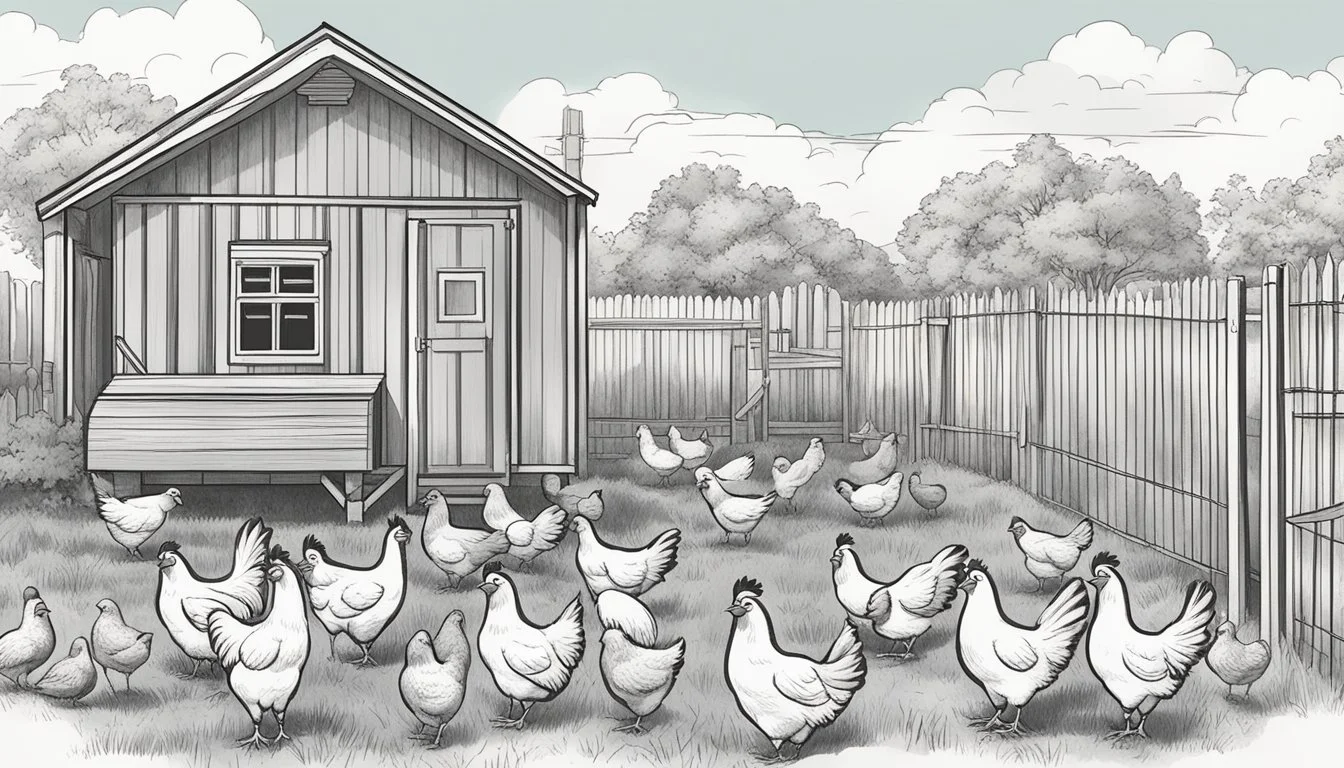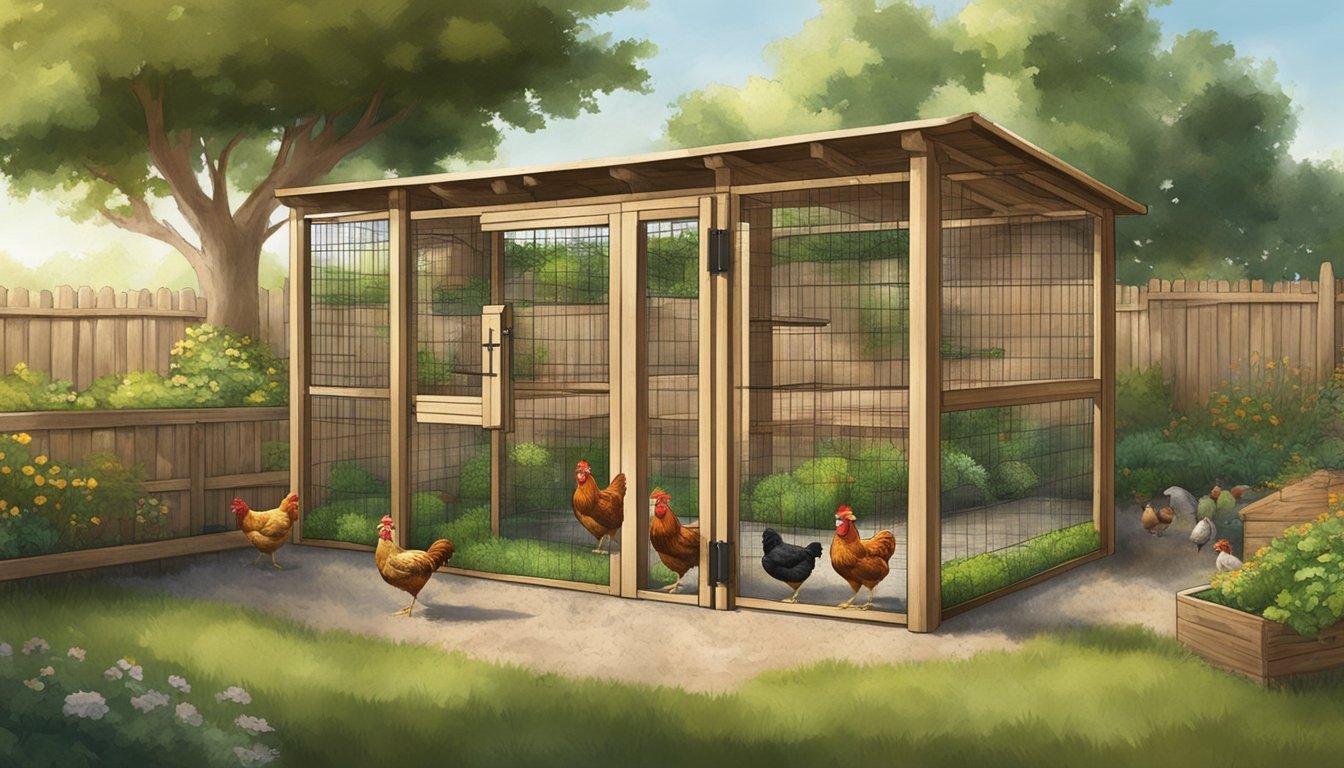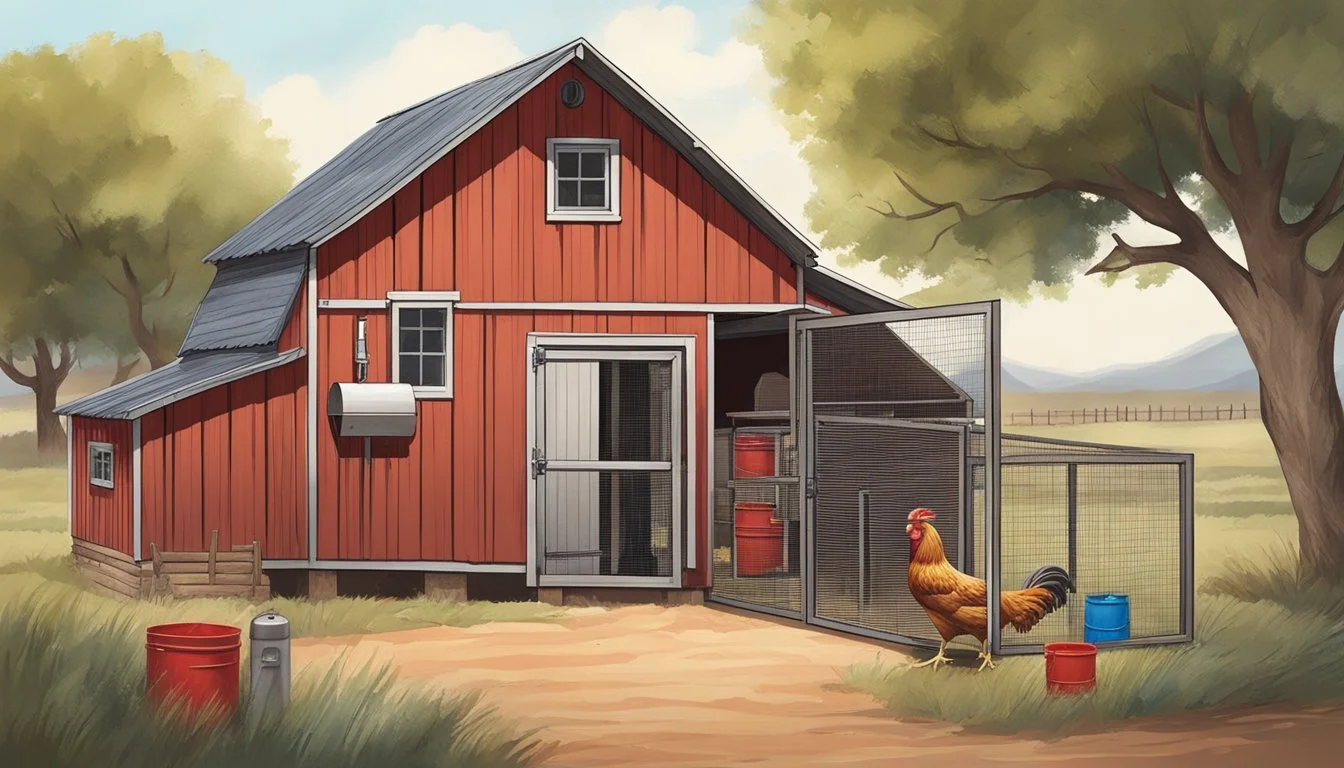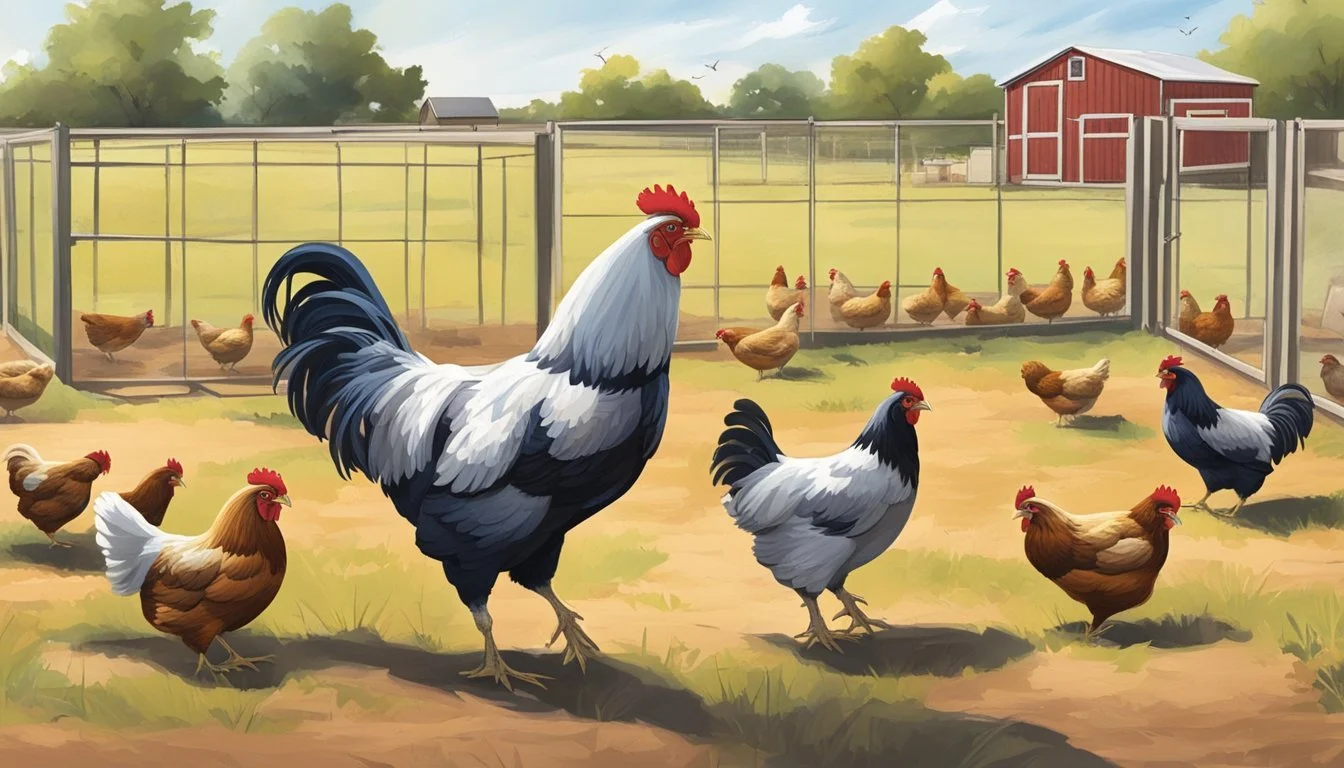Keeping Backyard Chickens in Amarillo, TX
Your Essential Guide to Local Regulations and Best Practices
In Amarillo, Texas, the concept of urban agriculture has taken root with many residents embracing the practice of keeping backyard chickens. The city’s ordinances allow for a slice of rural life within its urban boundaries, permitting residents to maintain a specified number of barnyard fowl, including chickens and ducks, on their property. This aligns with a growing movement in cities across the United States where individuals seek to produce their own food, enjoy the pleasures of animal caretaking, or simply engage in a sustainable lifestyle.
The City of Amarillo has specific guidelines designed to integrate backyard fowl into residential areas while minimizing conflicts with neighbors and ensuring the animals' welfare. According to the local codes, homeowners can keep up to four barnyard fowl per quarter acre, providing a balance between the desires of chicken enthusiasts and the need for community harmony. Proper shelter and care are essential components of backyard chicken keeping, and residents must select appropriate coop designs to offer safety and comfort for their chickens.
As this practice becomes more popular, Amarillo residents can enjoy the benefits of fresh eggs and the joy of raising chickens in their backyards. The guidelines and resources available make it a manageable endeavor for citizens to contribute to local sustainability efforts while adhering to the city’s regulations.
Understanding Amarillo's City Ordinances
Navigating Amarillo's city ordinances is crucial for residents interested in keeping backyard chickens. The regulations are designed to maintain community standards and animal welfare.
General Fowl Regulations
In Amarillo, the general city ordinance allows residents to keep barnyard fowl, which includes chickens, ducks, and similar birds. Residents should note that the allowance of fowl is subject to limitations set by the city's zoning rules. The number of fowl may be limited based on the size of the property, and specific requirements may apply to housing and maintaining these animals to ensure they do not become a nuisance or health hazard.
Specific Chicken Laws
For those specifically interested in raising chickens:
Number of Chickens Allowed: Residents can keep up to four chickens per quarter acre. This limitation is put in place to prevent overcrowding and potential noise, smell, or health issues.
Housing: Chickens must be kept in a secured area or coop and have adequate space, which the city may define in more detail.
Staying informed about any updates to the city's chicken laws is essential, as changes can occur that may affect how many chickens can be kept, housing requirements, and other related regulations.
Permits and Fines
Residents should be aware that while permits may not specifically be required to keep chickens, compliance with the city's ordinances is mandatory to avoid fines. If changes to ordinances are proposed, they typically undergo a public discussion phase where residents can provide their input.
Ordinance Violations: Failure to comply with the city's chicken ordinance can result in fines. These typically serve as a deterrent against potential violators and encourage residents to follow proper guidelines.
Ordinance No. 8109, for example, was not directly related to chickens but serves as a recent case of the city's active role in updating and enforcing its codes, demonstrating the necessity for residents to stay informed about the rules affecting their community.
Choosing the Right Chickens
When selecting chickens for a backyard flock in Amarillo, TX, it's essential to consider the purpose of the chickens, whether for egg-laying or meat, and to decide if roosters are appropriate for the specific circumstances.
Selecting Breeds
Choosing the right breed of chicken depends on whether the priority is egg production, meat, or a combination of both. Layers are breeds that are efficient in producing eggs, while meat birds are bred for optimal growth and meat quality. Some popular egg-laying breeds include the Rhode Island Red and Plymouth Rock, known for their hardiness and consistent egg production.
Egg-Layers:
Rhode Island Red: Hardy, excellent layers of brown eggs.
Plymouth Rock: Good-natured and reliable for egg-laying.
For individuals looking for dual-purpose chickens, breeds like the Sussex or Wyandotte can provide both substantial eggs and meat.
Dual-Purpose:
Sussex: Friendly and produce large eggs; suitable for meat.
Wyandotte: Distinguished by their beautiful feathers and overall vigor.
Hen or Rooster
Deciding between a hen or rooster is crucial. Hens are the female chickens that lay eggs, while the rooster is a male chicken, often kept for breeding purposes and flock protection. Residential areas such as Amarillo may have specific regulations regarding keeping roosters, as they can be quite noisy.
Hens: Needed for egg production; quieter, less aggressive.
Roosters: Necessary for fertilizing eggs to hatch chicks; can be noisy, more aggressive.
Amarillo residents are permitted to keep up to four barnyard fowl per quarter acre, which typically includes both hens and roosters. However, due to noise considerations, some people may prefer a flock of hens only.
Chicken Coop Essentials
Creating a home for backyard chickens in Amarillo involves thoughtful planning to ensure their comfort, safety, and health. Below, the key components of a chicken coop are demystified, focusing on the intricacies of design, ventilation, and nesting essentials.
Coop Design and Size
A chicken coop needs to be spacious enough to allow for healthy living. The rule of thumb is to provide a minimum of 3 square feet per chicken inside the coop. With space at a premium, it's crucial each chicken has room to move, feed, and rest without overcrowding, which can lead to stress and disease. Space requirements may increase if the chickens are confined and unable to forage outside.
Ventilation and Safety
An effectively designed coop ensures proper airflow without causing drafts in the area where chickens roost. Adequate ventilation is crucial to remove moisture and ammonia, maintaining good air quality. For safety, coops must be built to protect against predators. This means secure latches, sturdy wire mesh, and maintaining a solid structure to deter any unwanted visitors.
Nesting Boxes and Bedding
Each coop should have a sufficient number of nesting boxes—typically one box for every 3 to 4 hens. These should be filled with comfortable, absorbent bedding, such as straw or wood shavings, that must be kept clean and dry to prevent the spread of diseases. The nesting area's function is to provide a quiet space for hens to lay eggs, so it should be somewhat secluded and positioned away from the roosting bars to keep bedding from becoming soiled.
Creating a Healthy Living Environment
Proper space and attention to environmental conditions are vital for maintaining the health and wellbeing of backyard chickens in Amarillo, TX.
Space and Location
In Amarillo, residents are allowed to keep up to four barnyard fowl per quarter acre. Considering this regulation, each chicken should have at least 10 square feet of coop space and 20 square feet in the run. Location is equally important—coops should be placed in a well-drained area to prevent water pooling and to facilitate easy cleaning.
Coop Space: Minimum 10 sq ft per chicken
Run Space: Minimum 20 sq ft per chicken
Exercise and Free-Range Options
Exercise is crucial for the chickens' health; thus, incorporating free-range time can greatly benefit them. Free-range chickens are observed to be more active and engaged, often exhibiting natural behaviors such as foraging and dust bathing. A secure, enclosed space protects them from predators while allowing these beneficial activities.
Exercise: Necessary for health and wellbeing
Regular free-range time: Encourages natural behaviors
Winter Care
Amarillo winters, while not extremely harsh, still require preparation to ensure a clean and warm environment for chickens. Insulation helps in keeping the coop warm, but proper ventilation is also key to avoid moisture build-up that can lead to respiratory issues. Heaters can be used sparingly, with caution to prevent fires.
Insulation: To maintain warmth
Ventilation: To prevent moisture and respiratory problems
Cleanliness: Regular cleaning prevents diseases and parasites
By ensuring ample space, a safe location, adequate exercise options, and proper winter care, one can create a nurturing environment for backyard chickens.
Daily Chicken Care
Keeping backyard chickens healthy and productive in Amarillo requires consistent daily care, focused on maintaining clean living conditions and ensuring access to food and water.
Regular Cleaning
One must perform regular cleaning to prevent the spread of disease and to keep the chickens comfortable. Daily tasks include:
Fresh Water and Food: They should replenish water and food containers with fresh supplies.
Cleaning Feeders and Waterers: One must scrub and rinse feeders and waterers to prevent mold and contaminants.
Coop Inspection: Checking the coop for cleanliness is essential. They should remove droppings and turn over the bedding to keep the area dry.
Nest Boxes: It's important to ensure nest boxes are clean; therefore, they should remove any soiled bedding and replace it with clean material daily.
Maintaining these standards of cleanliness will support the overall health and well-being of backyard chickens in Amarillo.
Dealing with Potential Issues
Before embarking on the journey of backyard chicken keeping in Amarillo, TX, one needs to be prepared for associated challenges. The following are critical potential issues to monitor and manage, covering safety, neighborhood relations, and health within the city limits.
Predators and Pests
In Amarillo, backyard fowl are susceptible to common predators such as dogs, cats, and wildlife like foxes and hawks. To ensure the safety of chickens, secure coop construction is non-negotiable. Coop reinforcement with hardware cloth and proper locking mechanisms can prevent most predator attacks. Regular yard checks for burrowing or signs of predatory animals are also vital.
Regularly check for signs of predators: Tracks, droppings, or feathers near the coop.
Reinforce the coop: Use hardware cloth rather than chicken wire to protect from predators.
Noise and Neighborhood Relations
Chickens, and especially roosters, can cause noise that might disturb neighbors within city limits. While roosters are often more problematic due to their crowing, hens can also be noisy. It's crucial for owners to maintain good relations with their neighbors:
Monitor and manage noise: Consider rehoming roosters or employing no-crow collars.
Engage with neighbors: Communicate openly to address concerns about noise from chickens.
Health Concerns
Chickens can face a variety of health issues from stress to parasites. Owners should routinely:
Look for signs of health problems: Lethargy, loss of appetite, unusual droppings.
Practice preventative care: Keep the coop clean and provide proper nutrition and fresh water.
Health issues should be addressed promptly to prevent them from affecting the entire flock. Familiarity with common chicken illnesses and quick action can mean the difference between life and death for backyard chickens. Regular health checks are key for early detection and treatment.
Community Engagement and Legal Compliance
Residents of Amarillo, Texas need to navigate a set of city ordinances and consider Homeowners Association rules when keeping backyard chickens to ensure compliance and maintain community harmony.
City and County Interactions
The City of Amarillo maintains specific ordinances regarding the keeping of backyard poultry. Residents are allowed to keep up to four barnyard fowl per quarter acre, a regulation that reflects the community's balance between urban living and agricultural practices. This allowance aims to promote a sustainable lifestyle while respecting the proximity of urban neighbors.
Interactions with county regulations are generally limited to unincorporated areas where they often have no governance over the keeping of chickens. However, within the incorporated areas, such as Amarillo, the city's ordinances take precedence. Residents must ensure their chicken coops provide:
Adequate space for exercise
Protection from predators
Access to food and water
Additionally, these enclosures must be kept clean both for the animals' health and community sanitation purposes.
Homeowners Associations
Homeowners Associations (HOAs) in Amarillo may also impose more stringent regulations than those of the city ordinance. Members of these associations must adhere to the rules set by their respective HOAs, which can include but are not limited to:
Limitations on the number of chickens
Specific coop design standards
Location restrictions within a property
It is essential for residents living in neighborhoods governed by an HOA to check their CC&Rs (Covenants, Conditions, and Restrictions) to avoid conflicts that could lead to fines or the requirement to rehome their chickens. Active engagement between homeowners and their HOAs helps to ensure that personal interests align with community standards.
Expanding Your Flock
When expanding one's flock in Amarillo, it is essential for chicken owners to understand the nuances of integrating new chickens to maintain the wellbeing of both the newcomers and the existing members of the flock.
Integrating New Chickens
The process of adding chickens to your flock requires patience and observation. Whether starting with hatching eggs or introducing new chicks, the integration should be gradual to allow for proper acclimatization and socialization. Chicken owners typically begin by hatching eggs or acquiring chicks that are at least three to four weeks apart in age. This age difference allows for a staggered growth and reduces competition for resources.
Quarantine New Arrivals: Initially, keep the new chickens separated from the existing flock to monitor health and prevent the potential spread of diseases.
Introduce Through a Barrier: After quarantine, let the new chickens and the existing flock see each other through a fence or enclosure before physical mingling.
Supervised Free-Ranging: Once accustomed to one another, allow supervised interaction to ensure there's no bullying.
Secure Housing at Night: Provide secure housing for the new chickens at night to prevent conflicts and promote flock cohesion.
Amarillo's Backyard Chicken Culture
In Amarillo, Texas, the practice of raising backyard chickens is gaining popularity due to the city's supportive ordinances and a growing community interest in sustainable living. These activities are bolstered by local educational resources designed to foster responsible poultry keeping.
Educational Resources and Workshops
Amarillo's backyard chicken enthusiasts have access to a wealth of educational resources. These include workshops and meetings arranged by the Amarillo Chicken Club, an organization dedicated to rallying chicken keepers. They also work on collective efforts to discuss and possibly revise local laws related to chicken ownership. These platforms provide residents with vital information on the proper care and management of chickens, ensuring that both the birds and the community thrive together.
Knowledgeable local experts offer workshops that tackle various aspects of chicken husbandry, from setting up a coop to managing the health and welfare of the birds. The city's Animal Control branch plays a role in educating the public on the legal requirements of chicken keeping to ensure compliance with local ordinances. Their guidance helps residents understand that, per Amarillo regulation, one can keep up to four barnyard fowl per quarter acre.
These educational efforts are fundamental in fostering a responsible and well-informed backyard chicken culture in Amarillo, benefiting both the residents and the larger Texas community.











